In vivo genome editing using Staphylococcus aureus Cas9
- PMID: 25830891
- PMCID: PMC4393360
- DOI: 10.1038/nature14299
In vivo genome editing using Staphylococcus aureus Cas9
Abstract
The RNA-guided endonuclease Cas9 has emerged as a versatile genome-editing platform. However, the size of the commonly used Cas9 from Streptococcus pyogenes (SpCas9) limits its utility for basic research and therapeutic applications that use the highly versatile adeno-associated virus (AAV) delivery vehicle. Here, we characterize six smaller Cas9 orthologues and show that Cas9 from Staphylococcus aureus (SaCas9) can edit the genome with efficiencies similar to those of SpCas9, while being more than 1 kilobase shorter. We packaged SaCas9 and its single guide RNA expression cassette into a single AAV vector and targeted the cholesterol regulatory gene Pcsk9 in the mouse liver. Within one week of injection, we observed >40% gene modification, accompanied by significant reductions in serum Pcsk9 and total cholesterol levels. We further assess the genome-wide targeting specificity of SaCas9 and SpCas9 using BLESS, and demonstrate that SaCas9-mediated in vivo genome editing has the potential to be efficient and specific.
Conflict of interest statement
The authors declare competing financial interests: details are available in the online version of the paper.
Figures







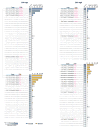
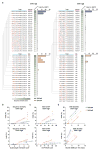
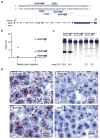
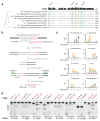

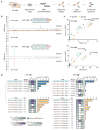


Similar articles
-
Engineered CRISPR-Cas9 nucleases with altered PAM specificities.Nature. 2015 Jul 23;523(7561):481-5. doi: 10.1038/nature14592. Epub 2015 Jun 22. Nature. 2015. PMID: 26098369 Free PMC article.
-
Inhibition of hepatitis B virus replication via HBV DNA cleavage by Cas9 from Staphylococcus aureus.Antiviral Res. 2018 Apr;152:58-67. doi: 10.1016/j.antiviral.2018.02.011. Epub 2018 Feb 16. Antiviral Res. 2018. PMID: 29458131
-
Divergent susceptibilities to AAV-SaCas9-gRNA vector-mediated genome-editing in a single-cell-derived cell population.BMC Res Notes. 2017 Dec 8;10(1):720. doi: 10.1186/s13104-017-3028-4. BMC Res Notes. 2017. PMID: 29221488 Free PMC article.
-
Application of CRISPR/Cas9 genome editing to the study and treatment of disease.Arch Toxicol. 2015 Jul;89(7):1023-34. doi: 10.1007/s00204-015-1504-y. Epub 2015 Apr 1. Arch Toxicol. 2015. PMID: 25827103 Review.
-
Determining the specificities of TALENs, Cas9, and other genome-editing enzymes.Methods Enzymol. 2014;546:47-78. doi: 10.1016/B978-0-12-801185-0.00003-9. Methods Enzymol. 2014. PMID: 25398335 Free PMC article. Review.
Cited by
-
Targeting Gys1 with AAV-SaCas9 Decreases Pathogenic Polyglucosan Bodies and Neuroinflammation in Adult Polyglucosan Body and Lafora Disease Mouse Models.Neurotherapeutics. 2021 Apr;18(2):1414-1425. doi: 10.1007/s13311-021-01040-7. Epub 2021 Apr 8. Neurotherapeutics. 2021. PMID: 33830476 Free PMC article.
-
"Genetic scissors" CRISPR/Cas9 genome editing cutting-edge biocarrier technology for bone and cartilage repair.Bioact Mater. 2022 Oct 7;22:254-273. doi: 10.1016/j.bioactmat.2022.09.026. eCollection 2023 Apr. Bioact Mater. 2022. PMID: 36263098 Free PMC article. Review.
-
Therapeutic Gene Editing in Dyslipidemias.Rev Cardiovasc Med. 2024 Aug 15;25(8):286. doi: 10.31083/j.rcm2508286. eCollection 2024 Aug. Rev Cardiovasc Med. 2024. PMID: 39228490 Free PMC article. Review.
-
CRISPR/Cas: a potential gene-editing tool in the nervous system.Cell Regen. 2020 Aug 6;9(1):12. doi: 10.1186/s13619-020-00044-6. Cell Regen. 2020. PMID: 32761306 Free PMC article. Review.
-
Low-dose AAV-CRISPR-mediated liver-specific knock-in restored hemostasis in neonatal hemophilia B mice with subtle antibody response.Nat Commun. 2022 Nov 25;13(1):7275. doi: 10.1038/s41467-022-34898-y. Nat Commun. 2022. PMID: 36434000 Free PMC article.
References
-
- Bolotin A, Quinquis B, Sorokin A, Ehrlich SD. Clustered regularly interspaced short palindrome repeats (CRISPRs) have spacers of extrachromosomal origin. Microbiol Read Engl. 2005;151:2551–2561. - PubMed
-
- Barrangou R, et al. CRISPR provides acquired resistance against viruses in prokaryotes. Science. 2007;315:1709–1712. - PubMed
-
- Garneau JE, et al. The CRISPR/Cas bacterial immune system cleaves bacteriophage and plasmid DNA. Nature. 2010;468:67–71. - PubMed
Publication types
MeSH terms
Substances
Associated data
Grants and funding
- R01-CA133404/CA/NCI NIH HHS/United States
- 5P30EY012196-17/EY/NEI NIH HHS/United States
- 5DP1-MH100706/DP/NCCDPHP CDC HHS/United States
- P01 CA042063/CA/NCI NIH HHS/United States
- P30 CA014051/CA/NCI NIH HHS/United States
- T32 GM007753/GM/NIGMS NIH HHS/United States
- P30-CA14051/CA/NCI NIH HHS/United States
- P30 EY012196/EY/NEI NIH HHS/United States
- DP1 MH100706/MH/NIMH NIH HHS/United States
- R01 GM034277/GM/NIGMS NIH HHS/United States
- Howard Hughes Medical Institute/United States
- R01 DK097768/DK/NIDDK NIH HHS/United States
- T32 GM008313/GM/NIGMS NIH HHS/United States
- P01-CA42063/CA/NCI NIH HHS/United States
- R01 EY024259/EY/NEI NIH HHS/United States
- T32GM007753/GM/NIGMS NIH HHS/United States
- 5R01DK097768-03/DK/NIDDK NIH HHS/United States
- R01-GM34277/GM/NIGMS NIH HHS/United States
LinkOut - more resources
Full Text Sources
Other Literature Sources
Research Materials
Miscellaneous

